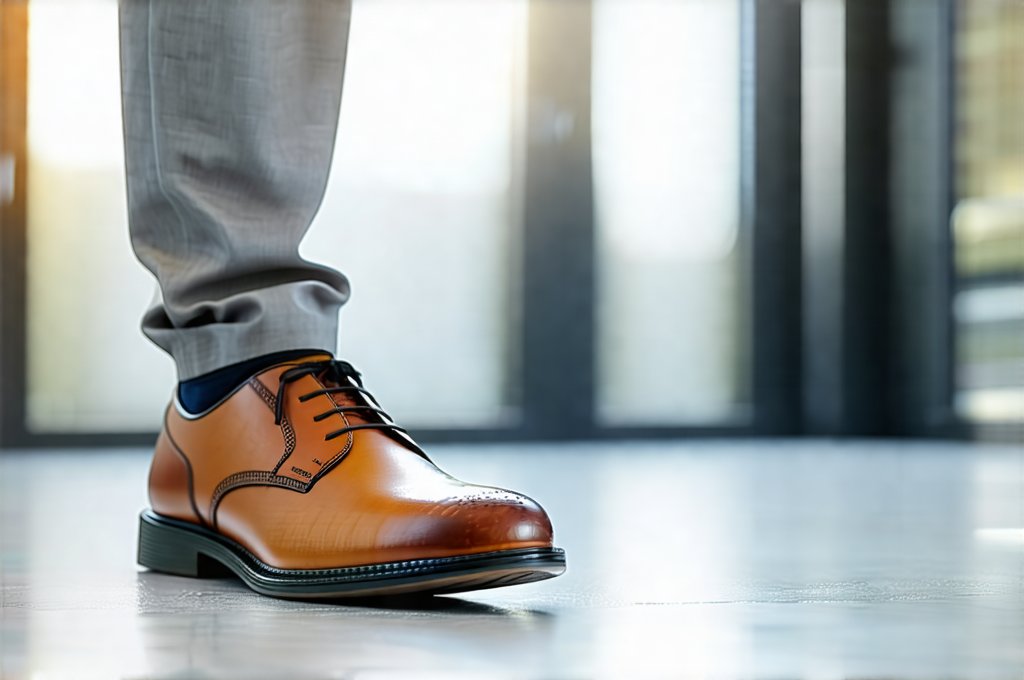Footwear plays an unexpectedly crucial role in overall musculoskeletal health, extending far beyond simple comfort and aesthetics. The choices we make regarding our shoes directly impact our gait – how we walk – which in turn affects posture, balance, and the distribution of stress throughout the body. Often overlooked is the intricate connection between these biomechanical factors and prostate health, an area increasingly recognized by researchers and clinicians. Poor posture and altered gait patterns can contribute to increased pressure on the pelvic floor, potentially exacerbating issues related to prostate function and comfort. This isn’t about direct causation, but rather a complex interplay where suboptimal movement mechanics can create or worsen conditions that impact this sensitive region of the body.
The relationship between footwear, posture, and overall health is a holistic one. Modern lifestyles often involve prolonged periods of sitting, coupled with shoe choices prioritizing fashion over function. This combination can lead to muscle imbalances, weakened core stability, and altered biomechanics. While many associate prostate issues solely with aging or genetics, the contribution of lifestyle factors – including footwear – is becoming increasingly apparent. Understanding this connection empowers individuals to make informed decisions about their footwear and movement habits, potentially promoting better musculoskeletal health and contributing to overall wellbeing. It’s not simply about finding ‘the best shoe’, but rather understanding how your shoes interact with your unique biomechanics.
The Biomechanics of Gait & Posture
Gait analysis reveals that the foot strike is the initial point of contact during walking, initiating a chain reaction that affects every joint above it – ankles, knees, hips, spine and even the head. Ill-fitting or unsupportive footwear can disrupt this natural movement pattern, leading to compensatory mechanisms throughout the body. For example, shoes with inadequate arch support can cause overpronation (excessive inward rolling of the foot), placing stress on the ankles, knees, and hips. Conversely, high heels force a forward lean, increasing strain on the lower back and altering pelvic alignment. These alterations in biomechanics directly impact posture, leading to imbalances that ripple upwards through the musculoskeletal system. A natural gait is characterized by a smooth heel-to-toe roll with minimal stress on joints; footwear should facilitate this movement rather than hinder it.
The postural adaptations resulting from improper footwear are often subtle but cumulative. Over time, these changes can contribute to muscle fatigue, pain, and even chronic conditions. Consider the impact of prolonged standing in inadequate shoes – the feet become tired, posture slumps, and weight distribution shifts. This altered weight bearing can put increased pressure on the pelvic floor muscles, which play a vital role in supporting the prostate gland and surrounding structures. Furthermore, restricted movement patterns caused by footwear can limit blood flow to the lower extremities and pelvic region, potentially impacting tissue health and function. Maintaining optimal posture is not merely about aesthetics; it’s essential for efficient body mechanics and overall wellbeing. Understanding the role of microbiome in prostate health can also contribute to a more complete understanding of pelvic well-being.
The core muscles play a critical role in stabilizing the spine and pelvis, and are intrinsically linked to gait and posture. When footwear compromises these biomechanical foundations, the core often has to work harder to compensate, leading to fatigue and potential imbalances. A strong core is vital for supporting pelvic organs and maintaining healthy function of the prostate region. Therefore, choosing supportive footwear that promotes natural movement can indirectly contribute to core strength and stability, fostering a more resilient musculoskeletal system and potentially mitigating factors associated with prostate discomfort or dysfunction.
Footwear Considerations & Prostate Health
While there’s no direct proof that specific shoes cause prostate issues, selecting appropriate footwear is undeniably linked to overall pelvic health and comfort. The ideal shoe provides adequate support, cushioning, and stability, allowing for a natural gait cycle without excessive stress on joints. Key features to look for include: – A supportive arch – preventing overpronation or supination (outward rolling of the foot) – Sufficient cushioning – absorbing impact forces and reducing strain – A flexible sole – allowing for natural movement – A heel-to-toe drop that promotes a natural gait cycle – Appropriate fit – ensuring adequate space in the toe box. Avoid shoes with excessively high heels, narrow toe boxes, or flat soles that offer minimal support.
The type of activity also dictates footwear choice. Running requires specialized running shoes with ample cushioning and support, while walking may benefit from lighter, more flexible options. Individuals who spend long periods standing should prioritize shoes with excellent arch support and shock absorption. It’s important to remember that everyone’s feet are different; what works for one person may not work for another. Consider seeking professional advice from a podiatrist or physical therapist to determine the best footwear based on your individual needs and biomechanics. Investing in quality footwear is an investment in long-term musculoskeletal health and can contribute to overall wellbeing, including pelvic comfort. It’s also important to consider foot warmth as it relates to pelvic muscle function.
The Role of Insoles & Orthotics
Insoles and orthotics can be invaluable tools for addressing specific foot or gait abnormalities. Over-the-counter insoles provide additional cushioning and arch support, while custom orthotics are prescribed by a healthcare professional and molded to the individual’s feet, offering more personalized correction. For individuals with flat feet or high arches, orthotics can help redistribute weight evenly across the foot, reducing stress on joints and improving alignment. This improved alignment can translate into better posture and reduced pressure on the pelvic floor. Custom orthotics are particularly beneficial for those experiencing chronic pain or discomfort related to gait imbalances.
The use of orthotics isn’t about masking a problem; it’s about addressing the underlying biomechanical issues that contribute to discomfort. By correcting foot mechanics, orthotics can help restore natural movement patterns and alleviate stress on the musculoskeletal system. This is especially relevant in relation to prostate health, as reduced pressure on the pelvic floor can promote better circulation and function. It’s essential to consult with a podiatrist or physical therapist before using orthotics to ensure they are appropriate for your specific needs and fitted correctly.
The Impact of Heel Height & Toe Box Shape
Heel height significantly impacts posture and gait. High heels shift the body’s center of gravity forward, forcing an unnatural curvature in the lower back and increasing stress on the knees and hips. This altered biomechanics can contribute to muscle imbalances and pelvic instability. Conversely, flat shoes can provide a more natural alignment but may lack sufficient support for certain individuals. A moderate heel height (around 1-2 inches) is generally considered optimal, promoting both comfort and stability. The shape of the toe box also plays a crucial role. Narrow toe boxes constrict the toes, leading to nerve compression and altered gait patterns. Wider toe boxes allow for natural toe splay, promoting better balance and reducing stress on the feet and ankles.
Integrating Footwear with Exercise & Movement
Footwear should be tailored not only to daily activities but also to specific forms of exercise. Running shoes differ significantly from walking shoes, and cross-training shoes are designed for a variety of activities. Choosing appropriate footwear for exercise is crucial for preventing injuries and optimizing performance. Furthermore, incorporating exercises that strengthen the core and pelvic floor muscles can complement the benefits of proper footwear. Exercises such as planks, bridges, and Kegels help stabilize the pelvis and support prostate health. A holistic approach to musculoskeletal wellbeing involves combining supportive footwear with regular exercise and mindful movement. Understanding estrogen’s role in male prostate health is also an important consideration for overall well-being.
Disclaimer: This article is for informational purposes only and does not constitute medical advice. Please consult with a healthcare professional for any health concerns or before making any decisions related to your health or treatment.





















